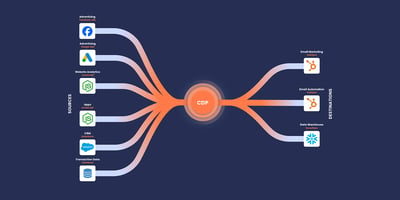Track your ROI utilising CPA (Cost Per Acquisition)
Cost per acquisition (CPA) is a pricing model where the advertiser pays for each acquisition. An acquisition can be a sale, click and even a form submission. CPA helps to link your costs and sales as you’re measuring the total cost to acquire that customer/sale.
First, you need to define a sale. For most digital marketers, a sale typically constitutes a conversion. However, depending on your campaign’s aim, you’re able to measure other results too. You may want to measure lead form submissions, newsletter subscriptions, software downloads or any other action. Remember that the action needs to be tied to an actual cost for you to determine an ROI.
The formula to measure CPA divides the total cost per campaign by the total number of actions that were received from each campaign.
CPA = CAMPAIGN COST / SALES
Say, for instance, your online ad campaign cost you $10,000 and you generated 70 leads. Your cost-per-acquisition is $142. Now you can work out your digital marketing campaigns’ return-on-investment.
CPA = 10,000 / 70
CPA = $142
But, while you can easily measure your ROI with the CPA formula, we believe that achieving your digital marketing ROI is dependent on defining explicit goals (or SMART goals).
Be SMART with your digital marketing goals
Without SMART (specific, measurable, attainable, realistic and timely) goals, it’s difficult to determine whether you have achieved your goal ROI. What are your goals? Increased brand awareness, more quality leads, or a higher conversion rate?
Specific - Your goal should be unambiguous and communicate what is expected, why it is important, who's involved, where it is going to happen and which constraints are in place.
Measurable - Your goal should have concrete criteria for measuring progress and reaching the goal.
Attainable - Your goal should be realistic and possible for your team to reach.
Relevant - Your goal should matter to your business and address a core initiative.
Timely - You should have an expected date that you will reach the goal.
Source: HubSpot
Know the restrictions of your digital marketing budget
When setting out SMART goals, you need to define your overall marketing budget. This is vital as your marketing budget lays out your capacity to achieve your goal ROI. You need to understand the nature of digital channels and how they perform, so you can assess their budgetary requirements. You can then decide on viable SMART goals to measure the ROI of your digital marketing campaigns.
Limited time and budget
Often, we want marketing returns comparable to big brands with a limited budget, but you must be realistic with the results, and you need to have a suitable marketing budget. There are quick wins to be had if you can allocate regular and significant budget on paid media like pay-per-click (PPC) advertising on search engines and promoted media on social media platforms. But with PPC, the quality of your returns are tied to the limitations of your budget. You can optimise your spend, but cut off the budget, and your campaign stops immediately.
A better option for proved ROI: The inbound methodology
This is why in our opinion, inbound marketing via engaging content and search engine optimisation offers an evergreen option for ROI. These practices lay a strong foundation for achieving a positive and longer-term ROI.
With inbound marketing software like HubSpot, you have an all-in-one marketing platform that helps you to increase traffic, convert leads and easily prove ROI. The focus with HubSpot is on utilising website traffic generated by strong content to convert and generate leads. It achieves this via blogging, landing pages, email marketing, marketing automation, lead management, SEO, social sharing, easy website design, analytics and more.
With HubSpot, you start developing mature search engine rankings that lead to more higher quality website traffic, as you’re not only focusing on one digital marketing tactic.
HubSpot also has you covered from a sales perspective where you can easily tie sales revenue to your digital marketing spend. When deals are closed, in relation to a digital marketing campaign, HubSpot Marketing can easily pull sales revenue data. This allows you to see the revenue generated from a marketing campaign to easily show ROI.
The HubSpot Sales Hub makes it simple to keep track of leads during every stage of the sales funnel. It does this by automating outreach with emails, meeting requests, live chats and keeps all your deal data logged. With HubSpot Sales, you can track your entire pipeline, and track deals won, lost and in progress. You see the results of your digital marketing campaigns in action.
MO Agency’s results from going inbound
We have seen hugely positive results from investing in HubSpot. At MO Agency, we have been delivering inbound marketing services for many years. However, when we started to layer HubSpot into our existing services, we saw a huge boost in our results and overall ROI.
After 9 months, following the implementation of HubSpot, we saw a 670% increase in our organic website traffic. Our strategy involved blogging, developing content offers, organic social media outreach and a very limited PPC budget.
We can help you reach your ROI
Our holistic approach to inbound marketing facilitated massive organic website traffic gains, the likes which we had never seen before and our initial investment paid off spectacularly in the end.
If you’re interested, we can help you achieve your goal ROI and get those returns you’re looking for. All you need to do is click below and make a booking with our expert inbound marketing team.





